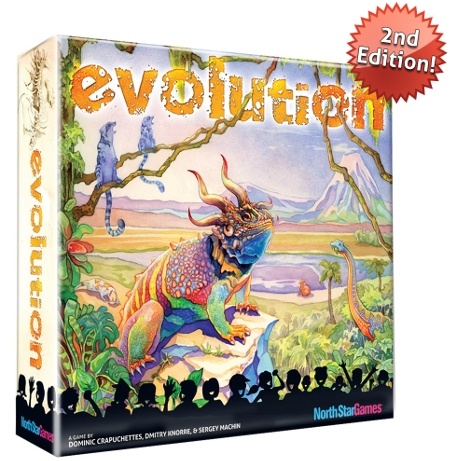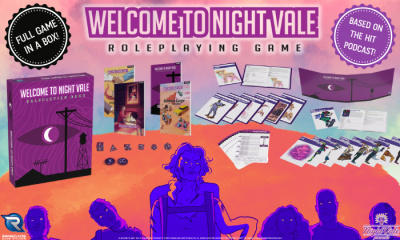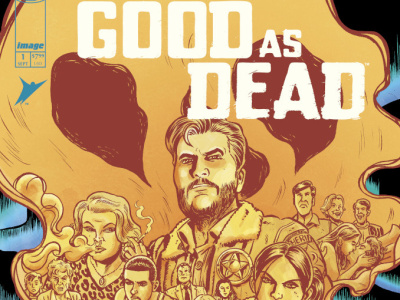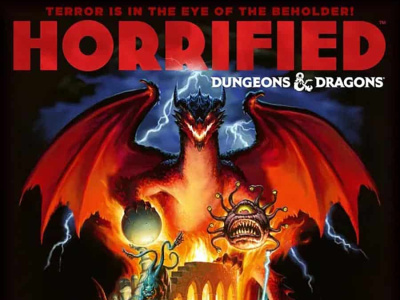Evolution 2nd Edition
Publisher: North Star Games
Release Date: August 2015
Price: $54.99
Game Designers: Dominic Crapuchettes, David Lipman, Luke Warren. Art by Catherine Hamilton
Format: Boxed game
Number of Players: 2-6 [special rules for 2 or 6 included, basic rules are for 3-5]
Playing Time: 60 minutes
Product #: N/A
Age Rating: 12+
ICv2 Rating: 4 stars out of five
This game began as a Kickstarter project, and unlike some of those it was well-designed and playtested. The reason for the quick second edition has to do with the psychology of play of the game, and a gaming trend that the designers overlooked: the rise of "couples" gaming sessions, where two people in a relationship happen to also be gamers. For reasons which should be obvious, gamers in this situation tend to play a less cutthroat style, and if the game isn’t balanced for this "Care Bear" approach, it isn’t as much fun. There were also some very minor fixes to rules, and a couple of needed clarifications.
The game itself is visually gorgeous. Artist Catherine Hamilton did an outstanding job with the cards and the box. The components are visually attractive, and the company put extra work into some of the things which are technically just frills, but which add flavor. The little bags you use to hold your consumed food counters have great artwork, and the dinosaur token you use to show first player is a real treat. If these were perks from the Kickstarter campaign, I heartily endorse their style of Kickstarter.
The changes in the second edition were mainly in the deck of cards. The food generated by the cards was reduced, making an all-herbivore game more competitive and interesting [this addresses the "problem" of couples not wanting to attach each other with carnivores]. As the game progresses, players have to think more about population sizes vs. available food. The rules in general are very clear and straightforward. In playing the game several times, only one question came up which wasn’t clear from the rules, and we figured out a logical interpretation without controversy.
As in the original game, your victory points come from developing a species in order to keep it from going extinct. Points are scored every turn based on how much food each species consumes, and this combines with the physical traits and population numbers of surviving species to give final totals. This means that even species which go extinct during the game can contribute to the scoring, if they survive long enough to eat even once, and this can matter. Often a few points will decide victory, and since most of your victory points are hidden in a bag, unless players devote a lot of memorizing to each turn’s scores, victory will usually be in doubt. It is possible for one player to get what seems like a dominant lead, but it is also very easy for other players to interfere with that lead. Making all of your herbivores difficult for that player’s best carnivore to eat is one way that can be quite effective. Or, messing with the food pool if he’s dependent on lots of herbivores can be a good tactic. There is apparently no such thing as a single perfect strategy, which is good.
Because each turn’s food supply is determined by cards put into the food pool by the players, there are strategies which evolve, as players decide if they want food to be plentiful or scarce on that turn. Careful use of carnivores can either devastate other players, or simply rack up victory points as they nibble carefully. An all-herbivore strategy is very viable, and can be fun, as you try to identify traits that make your particular herbivore viable in the long run. [A burrowing turtle-like creature with a long neck that can reach out and grab food from the tops of trees is an appalling concept, but survives quite well.] Overall, the game teaches players quite a bit about ecology and populations, so it could even be used in an educational environment.
Since you have to spend cards to gain traits, body size and body size, as well as to "launch" new species and to determine that turn’s food, card economy is important. So is thinking outside the box, as you may find you need your carnivore to nibble on your own herbivore, in order for both of them to survive on a bad turn.
The only reason I couldn’t give this a fifth star is that some people will simply not enjoy the game. There is an odd psychological backlash that makes some players feel guilty for driving their opponent’s species into extinction, either through carnivorous action or by manipulating the food pool. Those players will probably find an all-herbivore strategy very satisfying, if they stick with the game long enough to find out. Gaming couples who were unhappy with the way the first edition worked out should take another look at the second edition.
The suggested time for the game is accurate. More players only increase the playing time slightly, as the game is limited by a specific number of card plays. Younger players could probably handle the rules, but might not grasp the strategies.
--Nick Smith: Librarian Technician, Community Services, for the Pasadena Public Library in California.
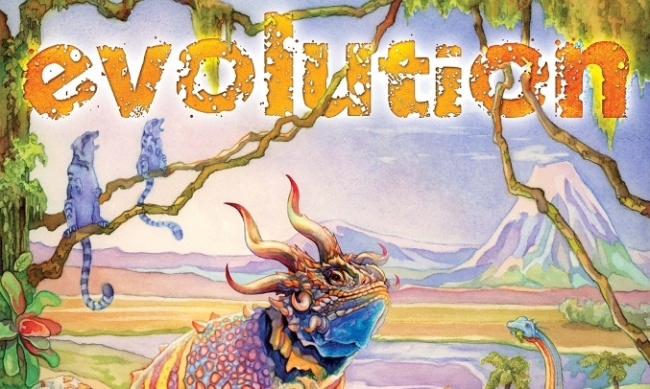
ICv2 Stars: 4 (out of 5)
Posted by Nick Smith on August 20, 2015 @ 2:45 am CT
MORE GAMES
'This Game is Killer: Frozen Horror'
August 19, 2025
Smirk & Dagger will release This Game is Killer: Frozen Horror , a new horror-themed party game, into retail.
From Surreal Desert Towns to Modern Monsters: RPGs to Stock Leading into October
August 19, 2025
Step into Night Vale’s strange world, then expand your store's horror RPG selection with these essential World of Darkness titles.
MORE REVIEWS
From Image Comics
August 18, 2025
Here's a preview of Good as Dead #1, by David & Maria Lapham.
ICv2 Stars: 3.5 (out of 5)
July 30, 2025
Here is a review of Ravensburger's Horrified: Dungeons & Dragons.



